SPOILER ALERT
Pieterjan Ginckels
Jan 28, 2015
(6pm)
Talk
Please RSVP
On January 28, Belgian artist and designer Pieterjan Ginckels of the collaborative SPEEDISM will discuss "TWO-FACED MF EASY RIDE," a new work currently on view in the Graham Foundation's exhibition, Treatise: Why Write Alone?
“TWO-FACED MF EASY RIDE” is a cruise through an architect's rendered theme park. Hyper-layered and immersive, SPEEDISM’s new dual channel video installation with sound and fog presents a possible anti-design method, revealing how embracing speed and the superficial as a condition might help construct alternative methods, tools, and modes of (re)production.
Pieterjan Ginckels is a Belgian artist and architect whose work concerns itself with the acceleration of modern life, which he explores through exhibitions and experiences that interweave spatial, artistic, and design practice, and everything in between. He studied architecture at K.U.Leuven, WENK Sint-Lucas Brussels, and Universität Stuttgart, and currently teaches at the KU Leuven Faculty of Architecture, Brussels. In 2008, Ginckels co-founded with German artist and architect Julian Friedauer, SPEEDISM, which proposes anti-methods for an increasingly theme-based, spectacular, and accelerated society.
"TWO-FACED MF EASY RIDE" is produced by Pieterjan Ginckels, Aster De Valck and Hantrax.
For more information on the exhibition, Treatise: Why Write Alone?, click here.

Opening Reception: Treatise: Why Write Alone?
Jimenez Lai
Jan 23, 2015
(6pm)
Opening Reception
Please RSVP
Please join us for a reception to celebrate the opening of our winter exhibition, "Treatise: Why Write Alone?," organized by Jimenez Lai.
6PM - Comments by Jimenez Lai, CAMES/gibson, Design with Company, is-office, Andrew Kovacs, Alex Maymind, Norman Kelley, and SPEEDISM.
This exhibition features the work of:
Bittertang (Michael Loverich & Antonio Torres), New York; Bureau Spectacular (Jimenez Lai), Chicago & Los Angeles; CAMES/gibson (Grant Gibson), Chicago; Design With Company (Stewart Hicks & Allison Newmeyer), Chicago; Fake Industries Architectural Agonism (Urtzi Grau & Cristina Goberna), New York; First Office (Andrew Atwood & Anna Neimark), Los Angeles; is-office (Kyle Reynolds & Jeff Mikolajewski), Chicago; Andrew Kovacs, Los Angeles; Alex Maymind, Los Angeles; Norman Kelley (Thomas Kelley & Carrie Norman), Chicago and New York; Point Supreme (Konstantinos Pantazis & Marianna Rentzou), Athens, Greece; Softlab (Mike Szivos), New York; SPEEDISM (Pieterjan Ginckels), Brussels, Belgium; and Young & Ayata (Michael Young & Kutan Ayata), New York.
PARTICIPANT BIOS
Bittertang is a New York City-based design farm founded by Michael Loverich and Antonio Torres. Bittertang has built three inflatable pavilions, a pregnant sugar-oozing piñata, a plush toy collection, a sagging birdcage, and edible environments. They have won numerous awards, including the 2010 Architectural League Prize and the 2014 AIA New Practices New York award. Michael Loverich received his MArch from the University of California, Los Angeles. He lives in Manhattan and currently teaches at the University of Pennsylvania. Antonio Torres graduated from the University of California, Los Angeles with an MArch before moving to New York to work for Neil Denari. He lives in Guadalajara and Manhattan and teaches in Mexico at ITESO and CCAU.
Jimenez Lai is the founder and leader of the design firm Bureau Spectacular. He holds an MArch from the University of Toronto. In the past several years, Lai has built numerous installations and has exhibited his work and published widely. Lai’s first manifesto, entitled Citizens of No Place,was published by Princeton Architectural Press in 2012 with a grant from the Graham Foundation. Lai is the recipient of numerous awards, including the Architectural League Prize for Young Architects (2012) and the inaugural Millennium BCP Lisbon Triennale Début Award (2013), among others. In 2014, he was the curator and designer of the Taiwan Pavilion at the 14th Venice Architectural Biennale. Lai currently teaches in the Department of Architecture and Urban Design at the University of California, Los Angeles.
Grant Gibson is a Chicago-based educator, registered architect, and founding principal of CAMES/gibson, Inc.—an architecture and design practice committed to creating environments and objects that are cross-pollinated with common social, political, economic interests and individual experiences and desires. Gibson received his MArch from the University of Illinois at Chicago, and holds degrees from Purdue University in Architectural Engineering and Construction Engineering Technology. He is currently clinical assistant professor at the University of Illinois at Chicago.
Design With Company (Dw/Co) is the Chicago-based architectural collaborative of Stewart Hicks and Allison Newmeyer. Dw/Co seeks to transform the world through textual and visual narratives, speculative urban scenarios, installations, and small-scale interactive constructions. Stewart Hicks received his MArch from Princeton University and is currently assistant professor of architecture at the University of Illinois at Chicago. He is a fellow of the MacDowell Artist Colony and a recipient of Architectural Record's Design Vanguard Award and the Young Architect's Forum Prize. Alison Newmeyer is visiting assistant professor at the University of Illinois at Chicago and also teaches at the University of Wisconsin–Milwaukee and the Illinois Institute of Technology. She is a fellow of the MacDowell Artist Colony and is the recipient of architectural awards from the Van Alen Institute and Architizer.
Founded by Cristina Goberna and Urtzi Grau, Fake Industries Architectural Agonism (FKAA) is an entity of variable boundaries and questionable taste that provides architectural tools to mediate between citizens and institutions, the public sphere, and disciplinary knowledge. Recent projects include a new National Velodrome for the City of Medellin, Colombia, the Superphosphates! master plan for the mining village of Aldea Moret, Spain, and the OE House in Barcelona. In 2014, FKAA won the AIA New York New Practices prize, and was shortlisted for the MoMA PS1 Young Architects Program, the Art-Basel-Miami Design pavilion, and most recently, the Guggenheim Helsinki Design Competition.
First Office is a Los Angeles-based architecture and design collaborative founded by Andrew Atwood & Anna Neimark. Built projects include a collaboration on the Pinterest Office Headquarters in San Francisco, a Dome stage in Afghanistan, a temporary Screening Room at the MAK Center for Art in Architecture in Los Angeles, and a rehabilitation of a Shotgun House in Lexington, Kentucky. Their work has been exhibited in the U.S. and abroad, including the Beijing Biennale, the Pacific Design Center, the Storefront for Art and Architecture, and an upcoming show at the MAK Center, Los Angeles, among others. Andrew Atwood graduated from Harvard’s Graduate School of Design, and is currently assistant professor of architecture at the University of California, Berkeley. Anna Neimark received a BA in architecture from Princeton University and an MArch from Harvard’s Graduate School of Design. She is currently a full-time faculty member at the Southern California Institute of Architecture.
Pieterjan Ginckels is a Belgian artist and architect whose work concerns itself with the acceleration of modern life, which he explores through exhibitions and experiences that interweave spatial, artistic, and design practice, and everything in between. He studied architecture at K.U.Leuven, WENK Sint-Lucas Brussels, and Universität Stuttgart, and currently teaches at KU Leuven Faculty of Architecture, Brussels. In 2008, Ginckels co-founded with German artist and architect Julian Friedauer, SPEEDISM, which proposes anti-methods for an increasingly theme-based, spectacular, and accelerated society.
is-office is a Chicago-based design firm specializing in objects, interiors, and buildings. Founded by Kyle Reynolds and Jeff Mikolajewski, the firm leverages the unique agency of physical form to engage issues of culture, urbanism, lifestyle, and iconography indigenous to the modern metropolis. Kyle Reynolds is an assistant professor at the University of Wisconsin Milwaukee School of Architecture and Urban Planning. He received an MArch from Princeton University and a BS in architecture with a certificate of urban planning from the University of Wisconsin at Milwaukee. His work and writing have been published in On Farming: Bracket 1, The SANAA Studios 2006-2008, and Pidgin Magazine, among others. Jeff Mikolajewski is a Project Designer at Johnston Marklee in Los Angeles. Previously he has lived in Shanghai, Milan, Copenhagen, and Chicago while working for such firms as Bjarke Ingels Group, Andrew Zago Architect, UrbanLab, and Gensler. He received an MArch from the University of Illinois at Chicago and a BS in architecture from the University of Wisconsin at Milwaukee.
Andrew Kovacs is a Los Angeles-based designer. He has exhibited at the Storefront for Art and Architecture, the Architecture and Design Museum, Los Angeles, and the Jai & Jai Gallery, Los Angeles. His work on architecture and urbanism has been published in Pidgin, Project, Clog, Domus, and Fulcrum, among others. Kovacs studied architecture at Syracuse University (BArch), The Architecture Association in London, and Princeton University (MArch). He is currently a visiting assistant professor in architecture & urban design at the University of California, Los Angeles.
Alex Maymind is a Los Angeles-based designer and teacher. He holds an MArch from Yale University where he was awarded the Taylor History & Theory Memorial Prize, and graduated cum laude in architecture from The Ohio State University’s Knowlton School of Architecture. He was the 2012-13 Walter B. Sanders Fellow at the University of Michigan where his research resulted in the exhibition 100 Drawings. His writing, ranging from a genealogy of the free section to an exploration of globalization’s clichés, have appeared in a number of journals including Log, Pidgin, Thresholds, OFFRAMP, and Clog. He is currently pursuing a PhD in history and theory of architecture at the University of California, Los Angeles.
Norman Kelley is the architecture and design collaborative of Carrie Norman and Thomas Kelley based in New York and Chicago. The firm’s work has been published and exhibited widely, most recently in Log 31: New Ancients and the 14th Venice Architecture Biennale. They are the recipients of the 2014 Architecture League of NY Young Architect’s Prize, and their design work is currently represented by Volume Gallery in Chicago. Thomas Kelley received an MArch from Princeton University and a BArch from the University of Virginia. He is the recipient of the Peter Reyner Banham Fellowship from SUNY Buffalo and the Rome Prize in Architecture from the American Academy in Rome. Kelley is currently a clinical assistant professor in the School of Architecture at the University of Illinois at Chicago. Carrie Norman received an MArch from Princeton University and a BArch from the University of Virginia. Norman is a licensed architect and a member of the Architecture League of NY Young Architects & Designers Committee. She is currently a Senior Design Associate with SHoP Architects in New York.
Athens-based Point Supreme was founded by Konstantinos Pantazis and Marianna Rentzou in 2008 after they studied and worked in London, Rotterdam, Eindhoven, Brussels, and Tokyo. At the heart of their practice are research and self-initiated proposals for the improvement of Athens. A selection of Athens Projects was exhibited in the Greek Pavilion of the 13th Venice Architecture Biennale in 2012. The office has won numerous awards including first prize in EUROPAN 10 for a social housing and master plan in Trondheim; a 2012 competition for the Athens waterfront; and the 2014 Urban Shade competition in Tel Aviv. They are currently nominated for the 2014 Iakov Chernikhov International Prize for Young Architects.
SOFTlab is a design studio based in New York City that operates at the intersection of architecture, art, video, and interactive media design. In 2012 SOFTlab was awarded the Architectural League Prize for Young Architects & Designers, and previously in 2010 the studio was selected for the New Practices New York award by the AIA New York Chapter. Michael Szivos created SOFTlab shortly after earning his graduate degree in architecture from Columbia University’s Graduate School of Architecture, Planning and Preservation. Szivos teaches at Yale University and is an assistant professor in the School of Architecture at the Pratt Institute.
Founded in 2008, Young & Ayata is a New York-based architectural design studio founded by Michael Young and Kutan Ayata. Young & Ayata view the tensions, overlaps, and frictions created through multiple mediations as the conditions for an aesthetic of estranged realism in architecture. Michael Young earned an MArch II from Princeton University and a BArch from Cal Poly San Luis Obispo. He is a registered architect in the State of New York, and is an assistant professor at The Cooper Union and visiting lecturer at Princeton University. Kutan Ayata received a BFA in architecture from Massachusetts College of Art in Boston and an MArch from Princeton University. He is a registered architect in the Chamber of Architects in Turkey, and is currently a lecturer at the University of Pennsylvania and adjunct assistant professor at Pratt Institute GAUD.
Image: Point Supreme (Konstantinos Pantazis & Marianna Rentzou), "Faliro Pier," 2012. Courtesy the artist.
For more information on the exhibition, Treatise: Why Write Alone?, click here.

Reyner Banham Loves Los Angeles (1972)
Alison Fisher and Greg Foster-Rice
Jan 08, 2015
(6pm)
Screening
Please RSVP
Reyner Banham Loves Los Angeles (1972) is a 50-minute film devoted to exploring the British architectural historian’s love affair with this uniquely American city. Banham roams the “four ecologies” of Los Angeles—beach, freeways, foothills, and basin—first presented in his 1971 book, with the playful assistance of “Baede-Kar” (an 8-track audio tour that parodies the 19th century German guidebooks published by Karl Baedeker). Along the way, he tours the Watts Towers, riffs on Googie architecture with artist Ed Ruscha, visits the unusual characters of Venice Beach, and meanders the highways with a giddy enthusiasm that knowingly celebrates the city’s sprawl and indecipherability, the very qualities derided by conventional critics of architecture and urbanism. The combination of Banham’s passion for history and pop culture and the film’s period footage, music, and cameos with local personalities makes for an entertaining and insightful tour through 1970s Los Angeles.
This film is presented in conjunction with the Graham-funded exhibition The City Lost and Found: Capturing New York, Chicago and Los Angeles, 1960-1980 on view at Art Institute of Chicago through January 11 and opening at the Princeton University Art Museum February 21. The screening will include introductory remarks by exhibition curators Alison Fisher and Greg Foster-Rice.
Alison Fisher is Harold and Margot Schiff Assistant Curator of Architecture and Design at the Art Institute of Chicago. With a focus on heterodox histories of modern architecture and urbanism, she has curated numerous exhibitions including the retrospective Bertrand Goldberg: Architecture of Invention (2011-12). She is the co-curator of The City Lost and Found: Capturing New York, Chicago and Los Angeles, 1960-1980.
Greg Foster-Rice is an Associate Professor at Columbia College Chicago, where he teaches the history, theory and criticism of photography. He has published extensively on the relationship of photographic media to the built environment, including co-editing and co-authoring the anthology Reframing the New Topographics (2011). He is the co-curator of The City Lost and Found: Capturing New York, Chicago and Los Angeles, 1960-1980.
Image: "Reyner Banham Loves Los Angeles," 1972.

Volatile Smile
Beate Geissler, Oliver Sann, Brian Holmes, and Karen Irvine
Dec 10, 2014
(6pm)
Talk
Please RSVP
What made Chicago a center of speculative culture—a culture which so rapidly emerged as the “non-place” where cybernetic logic bears it strangest and perhaps most powerful fruits?
On December 10, artists Beate Geissler and Oliver Sann, art critic Brian Holmes, and curator Karen Irvine will discuss their new Graham-funded book Volatile Smile, which investigates the impact of technology on systems of global commerce. An elucidating collage of text and images, Geissler and Sann’s latest project provides fundamental and unprecedented insights into the mutual impact of real and cybernetic architecture, with Chicago as its archetype. Published by Moderne Kunst Nurnberg, Volatile Smile includes images, otherwise unseen, from the operating centers of Chicago's financial industry and features essays by Brian Holmes, sociologist Karin Knorr Cetina, and eco-sociologist Dirk Baecker.
Following the event, please join us for a holiday reception in the Graham Foundation’s galleries and bookshop, which will be offering a special discounts of up to 40% off. Copies of Volatile Smile will be available for purchase at the Graham's Bookshop.
Beate Geissler and Oliver Sann were born in Germany and live and work in Chicago. Geissler received an MFA from the Hochschule für Gestaltung in Karlsruhe, while Sann received his MFA from the Academy of Media Arts in Cologne. Their work has been exhibited nationally and internationally in museums, galleries, and alternative spaces, including the Renaissance Society at the University of Chicago; the Museum of Contemporary Photography, Chicago; the Fotomuseum Antwerp; the NGBK (New Society for Visual Arts) in Berlin; the National Taiwan Museum of Fine Arts; the Fotomuseum Winthertur in Switzerland; and the Museum Ludwig in Cologne. They have received numerous grants and awards, including the Videonale Award from the Museum of Art, Bonn, Germany; the Herman-Claasen-Award (Cologne, Germany); and the Dean's Research Prize, from the School of Art and Design, University of Illinois at Chicago. They have published two monographs Return to Veste Rosenberg (2006) and Personal Kill (2010). Currently, Geissler is associate professor of art at the University of Illinois at Chicago and Sann is assistant professor at the School of the Art Institute of Chicago.
Brian Holmes is an art critic, activist and translator, living in Chicago. He is interested primarily in the intersections of artistic and political practice. He holds a doctorate in Romance Languages and Literatures from the University of California at Berkeley. Brian Homes was the English editor of publications for Documenta X, Kassel, Germany since 1997. Brian was a member of the graphic arts group 'Ne pas plier' from 1999 to 2001, and has recently worked with the French conceptual art group 'Bureau d'Études'. He is currently professor of philosophy at the European Graduate School in Saas-Fee, Switzerland.
Karen Irvine is Curator and Associate Director of the Museum of Contemporary Photography at Columbia College Chicago. She has organized over forty exhibitions of contemporary photography, at the MoCP and other venues including the Hyde Park Art Center; Rockford Art Museum; Lishui International Photography Festival, China; Daegu Photography Biennale, South Korea, and the New York Photo Festival.
Image: Beate Geissler and Oliver Sann, Chicago Board of Trade, a, 2013. Courtesy of the artists.
Related Grant: Beate Geissler and Oliver Sann, Volatile Smile (Verlag für moderne Kunst, 2013).

Intersection: A Dialogue between Architecture and Dance
Ginger Farley and Julie Hacker
Dec 06, 2014
(10am)
Workshop
Former dancer and choreographer Ginger Farley and architect Julie Hacker FAIA will run a one-day workshop to explore the intersection between dance and architecture. A small group of dancers and architects will be invited to participate with the goal of extending the dialogue between the two disciplines.
Ginger Farley has been a dancer, dancemaker, teacher, and advocate for live art since 1978. An early member of Hubbard Street Dance Chicago, she later directed her own company, The 58 Group, with colleague Cameron Pfiffner. Farley now leads the Chicago Dancemakers Forum, practices dramaturgy, and mentors emerging artists. She is a member of the Performance Programs Committee at the MCA, the advisory committee for the School of Theater and Music at UIC, space and programming committees at Links Hall, the advisory board for Arts in Sacred Places, and serves on the Board of Directors at Arts Alliance Illinois.
Julie Hacker is a practicing architect and a Fellow of the American Institute of Architecture. She is a graduate of Wesleyan University, where she majored in psychology and minored in dance, with a strong interest in choreography, which she pursued in New York after college. She returned to Chicago and received her Masters in Architecture at the University of Illinois Chicago, where she was the recipient of the Chicago Women in Architecture Award. She has been a practicing architect for the last 28 years. Her firm Stuart Cohen & Julie Hacker Architects specializes in residential work and has been published nationally and internationally. The work of her practice is the subject of a recent book, Transforming the Traditional, published in 2009.
Please Note: This is a closed event. If you are interested in participating in future workshops, please contact us at mkhimm@grahamfoundation.org.
Image: Kari Job and Jay Franke in a performance by the 58 Group at HotHouse, 2000. Photo: Brian Hill.

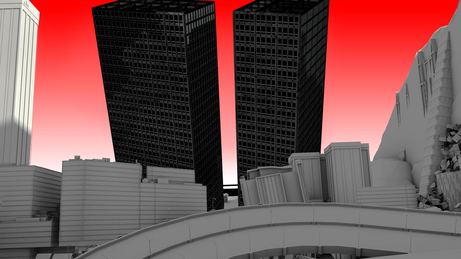
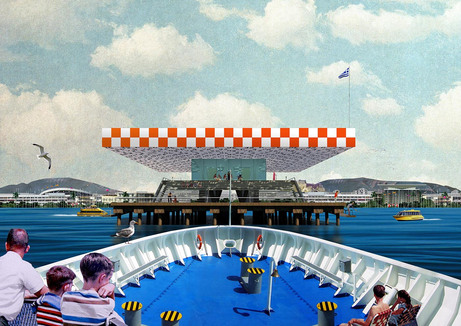
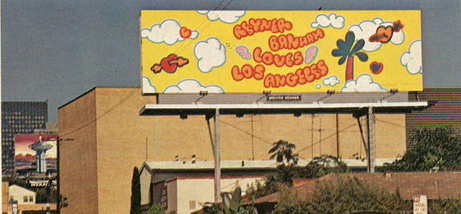
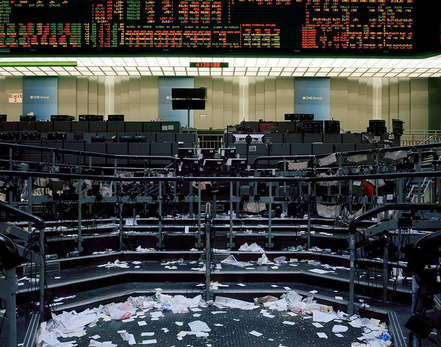
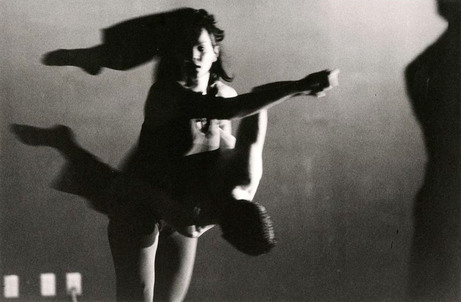
 PREVIOUS POSTS
PREVIOUS POSTS